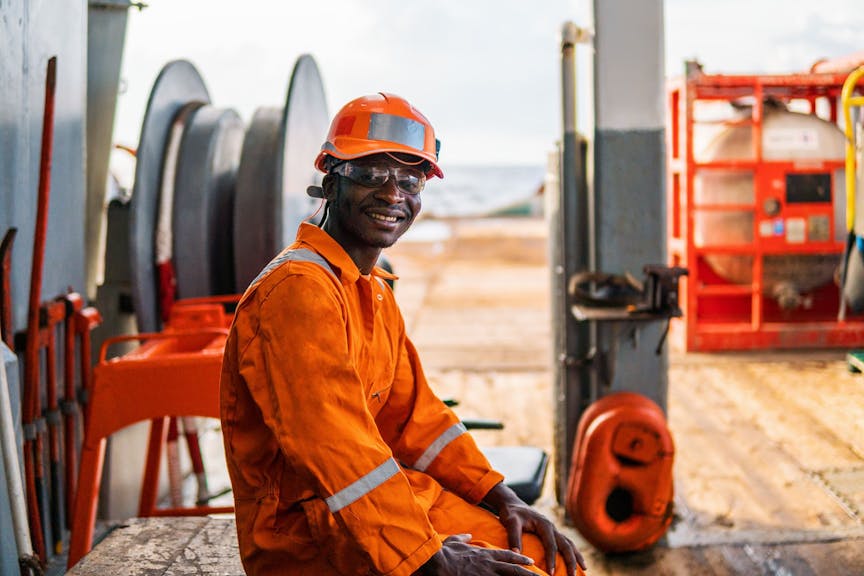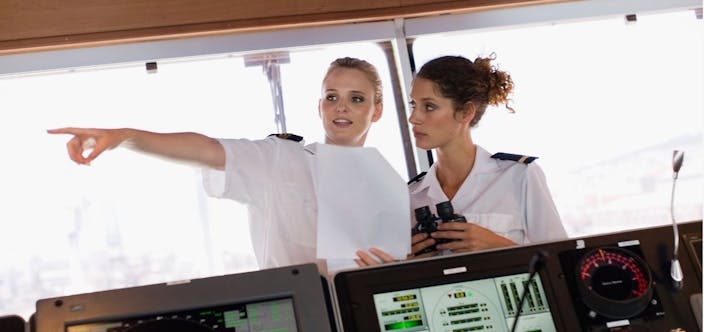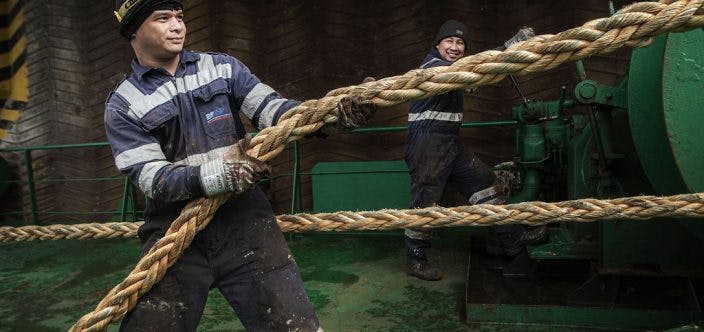Occupational health and safety
Seafaring is an occupation that comes with inherent risks. Based on recent EU data, there is a one in eleven chance of being injured onboard, and the Centre for Maritime Health and Safety Studies highlight that workers at sea have a high mortality, injuries and diseases rate compared with those ashore.
Working areas such as the deck, the galley, and the engine room are hazardous and there is the constant movement of the vessel which adds another challenge. Health and safety need to be embedded into daily thought processes and actions so that crew can look after themselves and each other. This article suggests some best practices to mitigate risk by discussing what safety is, how a “just culture” can improve occupational safety, and the correct mindset and habits that crew need in order to support a healthy work environment onboard.

Safety culture
The right mindset is crucial – every individual contributes to the culture which is the foundation of safety onboard.
Safety can be defined as the sum of technical, human, and organizational factors that allow for failures safely.
Safety culture has various definitions, but Frank J. Tullo (Crew Resource Management, Second Edition) sums it up well, describing it “as the product of the individual and group values, attitudes, competencies and patterns of behaviour that determine the commitment to, and the style and proficiency of, an organization’s health and safety program”. There are four parts of safety culture to keep in mind; informed culture, a reporting culture, a learning culture, and a just culture.
A just culture
A Just culture can be described as an atmosphere of trust where people are encouraged, even rewarded, for providing essential safety related information/reports. Mistakes are seen as a natural part of human nature, but there is also a clear line drawn between acceptable and unacceptable behaviour (James Reason, 1997). This is not a new concept, but it has taken time to truly adopt it in the maritime industry. By embracing a just culture and through having a safety oriented and committed ship management, people can report mistakes and observations without feelings of unease or reluctance. Proactive risk identification and management, along with feedback and actions on reported events allows for “safe failures”.
Reporting and a Safety Routine
To minimise the unknown and unexpected, frequent, simple, and relevant safety reporting is necessary. There are several fit for purpose reporting systems and schemes. One which is purpose built for shipping is the ForeSea’s IRIS system – widely used by Nordic ship owners.
Another necessity is that using safety hardware onboard the vessel is the everyday norm. PPE (Personal Protective Equipment), helmets, safety goggles, Hi-vis clothing, protective clothing, fall arrestors, signage, and restricted use of mobile devices etc should be routine. Complacency and shortcuts lead to accidents, and the more vigilantly safety is followed, the more routine it becomes.
Common and dangerous operations onboard
The most dangerous operations onboard include:
- Enclosed space entry
- Mooring
- Working Aloft
- Working over the side
- Engine maintenance at sea
- Handling heavy or unwieldy objects
- Cargo related work
The most common injuries among seafarers are:
- Strain, sprain or twist
- Bruising, burns, cut or piercing injury
- Foreign object in the eye or body
- Striking injury
- Fractured or broken bones
- Crush or trap injury
The typical circumstances for these accidents to occur are slips, trips and falls when moving around the vessel. These account for roughly 50% of all onboard accidents.
Healthy habits
Good habits also help us to maintain a healthy work life onboard. Seafarers are at a high risk for suffering lifestyle diseases and mental illness struggles. Creating healthy everyday habits plays a pivotal role in curbing these occupation-related hazards.
What are good habits?
- Habits that keep you and others safe
- Habits that are kind to your future self
- Habits that help to make you the person you want to be
Change your habits for the better
- If you want to change a habit, change your pattern. For example: You have planned to go to the gym at the end of your shift, but you notice you always feel low on energy and get stuck scrolling through Facebook after work. Try instead to go to the gym before work.
- Make it easy for yourself to choose good things and prioritise. For example: You want to eat more salad. Make sure you start by putting salad on your plate and then add other food. This way, the salad will automatically assume priority over meat and potatoes.
- Make it harder to do what you want to avoid. For example: You want to avoid the impulse of scrolling on your phone. Erase the app when you are done, so you have to download it every time you want to use it.
Stick to your good habits
- Quantity is better than quality. Repeat a desired habit as often as possible, but you don’t need to do it all the way. For example: You want to be more physically active but don’t have the energy to go to the gym. Instead take a short brisk walk as frequently as you can; this is much better than doing nothing.
- In order to stick to a habit, you need to feel rewarded. The reward can be a sense of wellbeing or satisfaction or simply that you have more energy, but even short-term rewards for a completed task, such as marking it off in your calendar/on a list, or listening to good music while doing it, can be very effective.



